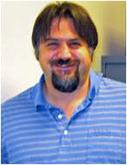ME 100/200 Seminar on "Multiscale Mechanical Modeling of Fibrous Tissues"
Events | Mechanical Engineering
ME 100/200 Seminar on "Multiscale Mechanical Modeling of Fibrous Tissues"
January 5, 2015 7:30 AM

Speaker
Victor Barocas, University of Minnesota
Location
ESB 1001
Type
Seminar
Fibers, especially collagen fibers, form the primary mechanical component of many load-bearing tissues, including tendons, ligaments, blood vessels, and skin. In our attempts to understand the function and dysfunction of such tissues, we are often informed by information on the very small scale - network architecture from SEM or confocal microscopy, fiber orientation from polarized light, and fiber stress-strain or degradation data from microscopic experiments. Using that information to construct a meaningful model of the tissue as a whole, however, remains an important and difficult challenge. Our group uses a two-scale approach in which the tissue scale is represented by a continuous finite-element mesh, but the constitutive equation is replaced with a microscopic-scale network problem at each integration point. This approach allows coupling between the fiber and the tissue scale, which can then be used to interrogate individual fibers (e.g., to select some for degradation or failure) or to introduce a more complex fiber architecture, perhaps with interacting components. Specific applications of our approach include the facet capsular ligament in the spine and the mechanical behavior of a blood vessel, as well as collagen gels, which serve as an excellent well-controlled tissue analog. The seminar will focus on comparison between the model and experiments on tissues and tissue analogs, including calculations of fiber reorientation under load and tissue failure.
Bio: Victor Barocas is a Professor of Biomedical Engineering at the University of Minnesota. He received is B.S. (1988) and M.S. (1989) from MIT and his Ph.D. (1996) from Minnesota, all in chemical engineering, and he began his career developing a biphasic model of cell-driven compaction of collagen gels. Over the past two decades, he has continue to study collagen gels and has also moved into a wide range of other tissue mechanics applications, attempting to create a "materials science of tissue" - an exploration of the relationship between the microscopic structure and composition of a tissue and that tissue's macroscopic mechanical properties. Prof. Barocas also serves as the co-Editor-in-Chief of the ASME Journal of Biomechanical Engineering.